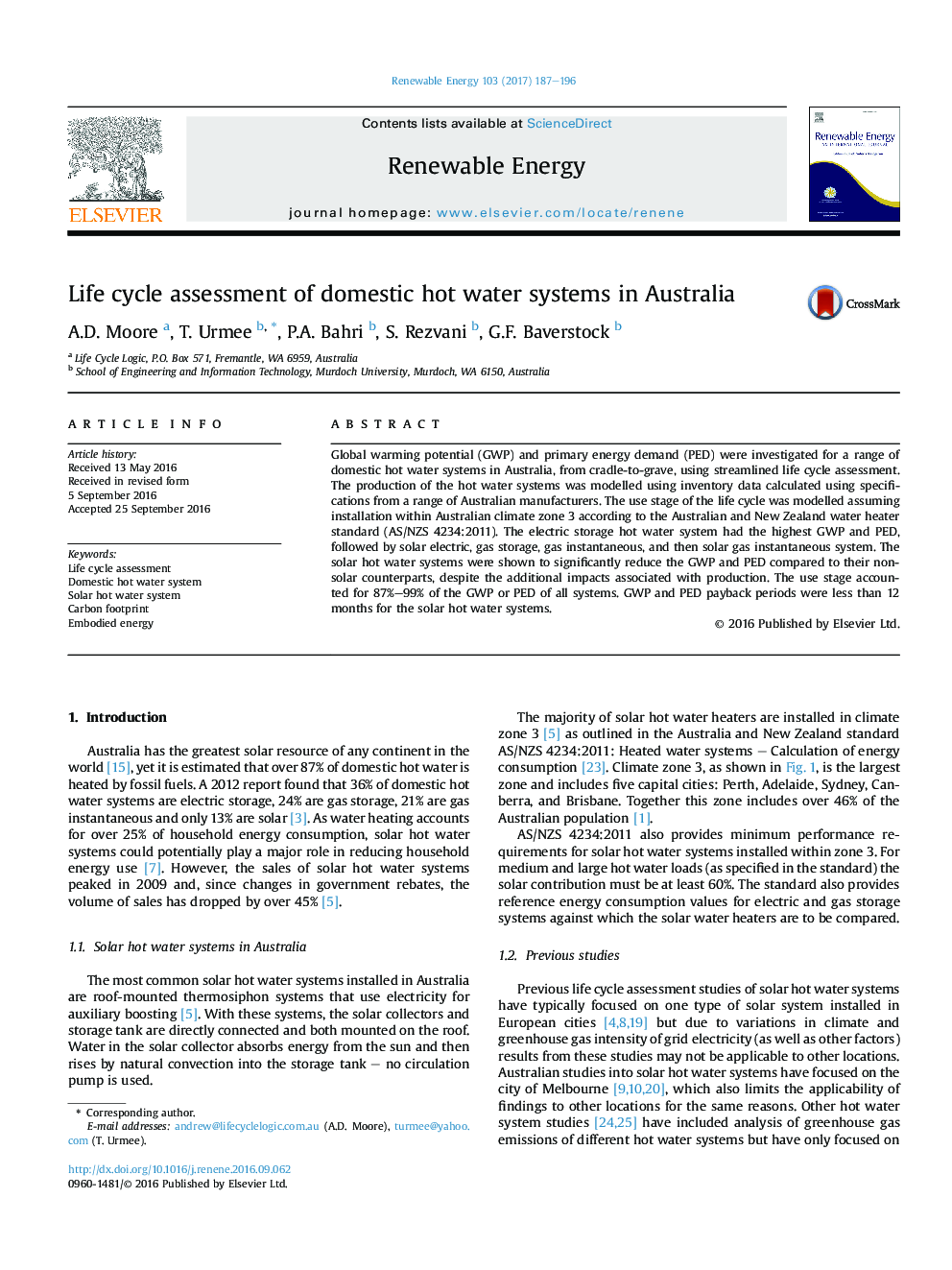| Article ID | Journal | Published Year | Pages | File Type |
|---|---|---|---|---|
| 4926566 | Renewable Energy | 2017 | 10 Pages |
Abstract
Global warming potential (GWP) and primary energy demand (PED) were investigated for a range of domestic hot water systems in Australia, from cradle-to-grave, using streamlined life cycle assessment. The production of the hot water systems was modelled using inventory data calculated using specifications from a range of Australian manufacturers. The use stage of the life cycle was modelled assuming installation within Australian climate zone 3 according to the Australian and New Zealand water heater standard (AS/NZS 4234:2011). The electric storage hot water system had the highest GWP and PED, followed by solar electric, gas storage, gas instantaneous, and then solar gas instantaneous system. The solar hot water systems were shown to significantly reduce the GWP and PED compared to their non-solar counterparts, despite the additional impacts associated with production. The use stage accounted for 87%-99% of the GWP or PED of all systems. GWP and PED payback periods were less than 12 months for the solar hot water systems.
Related Topics
Physical Sciences and Engineering
Energy
Renewable Energy, Sustainability and the Environment
Authors
A.D. Moore, T. Urmee, P.A. Bahri, S. Rezvani, G.F. Baverstock,
